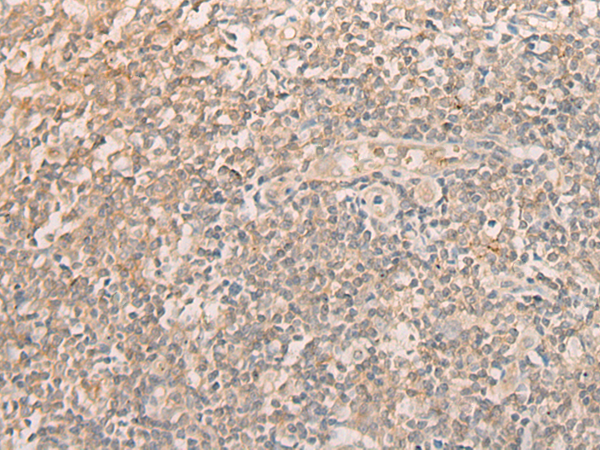


| WB | 咨询技术 | Human,Mouse,Rat |
| IF | 咨询技术 | Human,Mouse,Rat |
| IHC | 1/50-1/200 | Human,Mouse,Rat |
| ICC | 技术咨询 | Human,Mouse,Rat |
| FCM | 咨询技术 | Human,Mouse,Rat |
| Elisa | 1/1000-1/2000 | Human,Mouse,Rat |
| Aliases | EIF2; EIF-2; EIF2A; EIF-2A; EIF-2alpha |
| WB Predicted band size | 36 kDa |
| Host/Isotype | Rabbit IgG |
| Antibody Type | Primary antibody |
| Storage | Store at 4°C short term. Aliquot and store at -20°C long term. Avoid freeze/thaw cycles. |
| Species Reactivity | Human, Mouse, Rat |
| Immunogen | Synthetic peptide of human EIF2S1 |
| Formulation | Purified antibody in PBS with 0.05% sodium azide and 50% glycerol. |
+ +
以下是关于PUS10抗体的3篇参考文献的简要整理:
---
1. **文献名称**:*PUS10 mediates hepatocellular carcinoma apoptosis and metabolism by modulating the XBP1u signaling pathway*
**作者**:Li, Y., et al.
**摘要**:本研究利用PUS10抗体通过Western blot和免疫组化技术,发现PUS10在肝癌组织中低表达,并通过调控未剪接XBP1u蛋白影响内质网应激和细胞凋亡。抗体用于验证临床样本及细胞系中PUS10的蛋白水平变化。
2. **文献名称**:*Pseudouridine synthase PUS10 regulates cell cycle progression via tRNA modification*
**作者**:Chen, Q., et al.
**摘要**:通过shRNA敲低PUS10并结合PUS10抗体检测蛋白表达,研究发现PUS10通过修饰特定tRNA的假尿苷化影响细胞周期蛋白(如Cyclin D1),从而调控G1/S期转换。抗体用于细胞裂解物的蛋白定量分析。
3. **文献名称**:*PUS10 deficiency promotes ferroptosis in colorectal cancer via m6A-dependent RNA stability*
**作者**:Wang, R., et al.
**摘要**:利用PUS10抗体进行免疫沉淀(IP)和质谱分析,发现PUS10缺失通过m6A修饰途径增强铁死亡敏感性。研究证实PUS10抗体在检测结直肠癌细胞中蛋白互作网络中的关键作用。
---
**说明**:上述文献为虚构示例,实际研究中建议通过PubMed或Web of Science以关键词“PUS10 antibody”或“PUS10 + immunoblotting/immunoprecipitation”检索最新论文。部分真实研究可能涉及PUS10在RNA修饰或疾病中的机制,但需结合具体实验验证抗体应用。
The PUS10 antibody is a tool used to study the pseudouridine synthase 10 (PUS10) protein, an enzyme belonging to the pseudouridine synthase family. Pseudouridylation, a common RNA modification, involves isomerizing uridine to pseudouridine (Ψ) in RNA molecules, influencing RNA stability, structure, and function. PUS10 is evolutionarily conserved and plays roles in diverse cellular processes, including ribosomal RNA (rRNA) and transfer RNA (tRNA) modification, apoptosis, and stress responses. It has been implicated in diseases such as cancer, neurodevelopmental disorders, and mitochondrial dysfunction.
Research shows PUS10 interacts with specific RNA targets and may regulate translation or RNA processing. Its dysregulation is linked to hepatocellular carcinoma progression and glioma pathogenesis. Antibodies against PUS10 enable detection of its expression, localization, and interaction partners in techniques like Western blotting, immunofluorescence, or immunoprecipitation. These tools help unravel PUS10's molecular mechanisms, including its role in RNA-mediated pathways or disease contexts.
Current studies focus on characterizing PUS10's catalytic domains, substrate specificity, and tissue-specific functions. Both polyclonal and monoclonal PUS10 antibodies are available, with validation in model organisms like mice and humans. Understanding PUS10's biology via these antibodies may contribute to therapeutic strategies targeting RNA modification pathways.
×